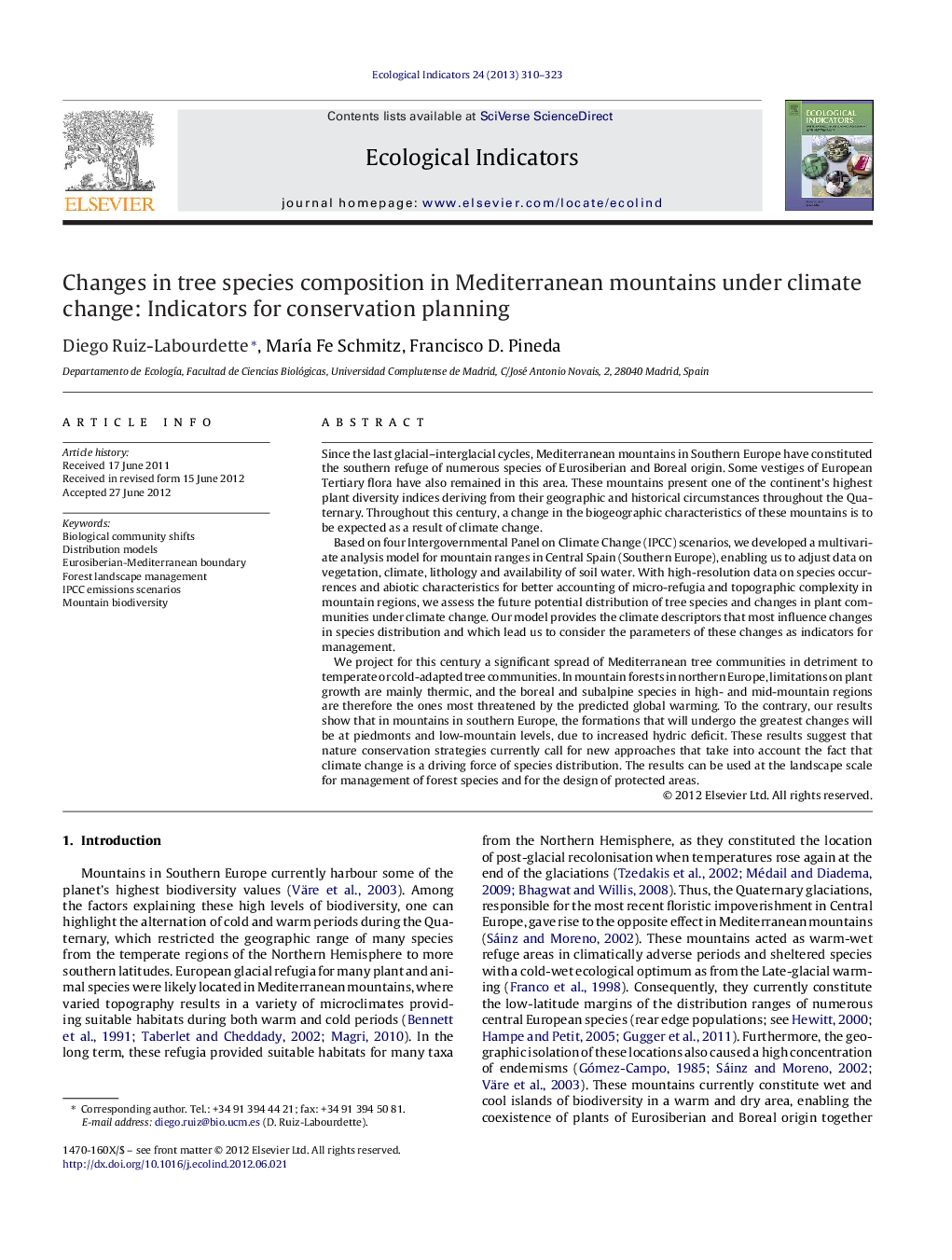| Article ID | Journal | Published Year | Pages | File Type |
|---|---|---|---|---|
| 4373651 | Ecological Indicators | 2013 | 14 Pages |
Since the last glacial–interglacial cycles, Mediterranean mountains in Southern Europe have constituted the southern refuge of numerous species of Eurosiberian and Boreal origin. Some vestiges of European Tertiary flora have also remained in this area. These mountains present one of the continent's highest plant diversity indices deriving from their geographic and historical circumstances throughout the Quaternary. Throughout this century, a change in the biogeographic characteristics of these mountains is to be expected as a result of climate change.Based on four Intergovernmental Panel on Climate Change (IPCC) scenarios, we developed a multivariate analysis model for mountain ranges in Central Spain (Southern Europe), enabling us to adjust data on vegetation, climate, lithology and availability of soil water. With high-resolution data on species occurrences and abiotic characteristics for better accounting of micro-refugia and topographic complexity in mountain regions, we assess the future potential distribution of tree species and changes in plant communities under climate change. Our model provides the climate descriptors that most influence changes in species distribution and which lead us to consider the parameters of these changes as indicators for management.We project for this century a significant spread of Mediterranean tree communities in detriment to temperate or cold-adapted tree communities. In mountain forests in northern Europe, limitations on plant growth are mainly thermic, and the boreal and subalpine species in high- and mid-mountain regions are therefore the ones most threatened by the predicted global warming. To the contrary, our results show that in mountains in southern Europe, the formations that will undergo the greatest changes will be at piedmonts and low-mountain levels, due to increased hydric deficit. These results suggest that nature conservation strategies currently call for new approaches that take into account the fact that climate change is a driving force of species distribution. The results can be used at the landscape scale for management of forest species and for the design of protected areas.
► We modeled the potential forest distribution with high-resolution climate change scenarios. ► A migration to higher elevations is expected for sclerophyllous species. ► A decline in European temperate forests will occur in the 21st century. ► Climate change effects will be greater in mid/low altitudinal areas of Mediterranean mountains. ► Changes can affect biodiversity at the low-latitude-limit of numerous Eurosiberian trees.
